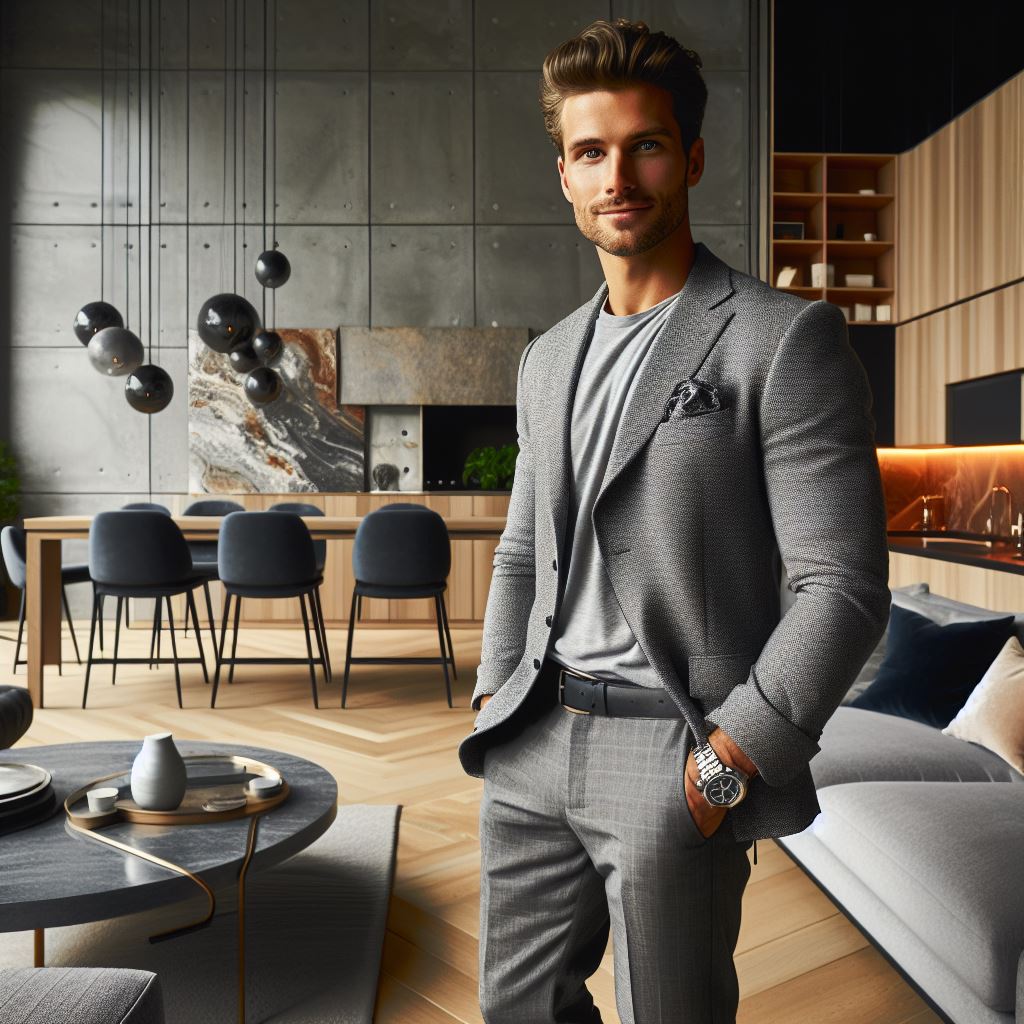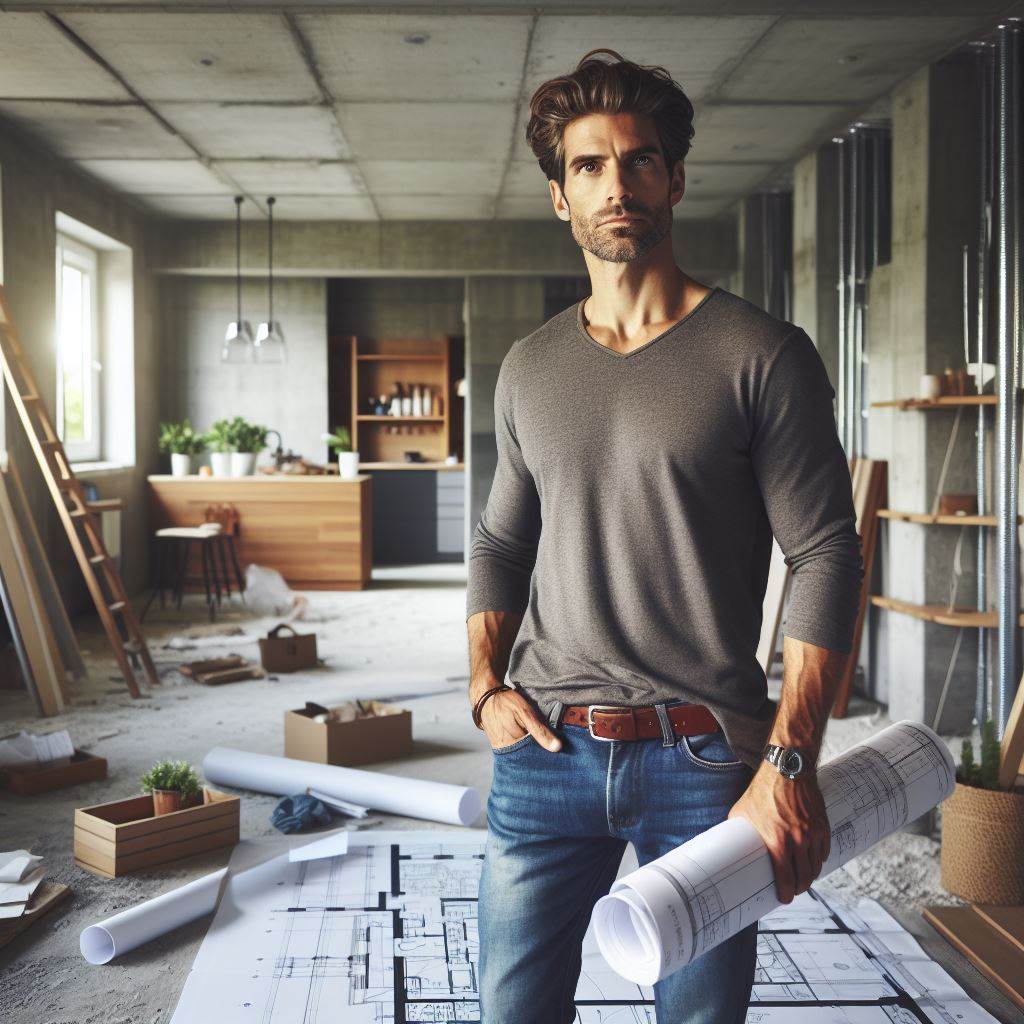Introduction
In the dynamic landscape of 2024, interior design stands at the forefront of societal transformation.
The way we perceive and interact with spaces has evolved, making the role of interior design more crucial than ever.
As we navigate a world marked by rapid technological advancements and shifting cultural paradigms, our living spaces become reflections of our values and aspirations.
Amidst this evolution, a key player emerges in the realm of interior design – the emphasis on textural elements.
In 2024, designers are increasingly recognizing the power of texture to elevate spaces beyond mere visual aesthetics.
The tactile experience of a space has become a vital component in creating environments that engage, inspire, and resonate with the occupants.
This post delves into the transformative potential of textural elements within interior design, unraveling their profound impact on the way we perceive and interact with our surroundings.
As we explore the intersection of technology, sustainability, and creativity, we unravel how textures are becoming the language through which interior designers communicate with the future.
Join us on this textured journey through the ever-evolving landscape of interior design, where the tactile language of surfaces and materials shapes not only the physical spaces we inhabit but also the way we experience and connect with our environments.
In the chapters that follow, we will dissect the role of specific textural elements, showcasing their potential to create immersive, dynamic, and harmonious interiors in the year 2024.
Definition and Importance of Textural Elements in Interior Design
Definition of textural elements
- Textural elements in interior design refer to the tactile qualities and visual patterns of various materials used in a space.
- These elements can include rough or smooth surfaces, patterns, fabrics, and finishes.
- They add depth, dimension, and visual interest to a room.
The importance of textural elements in creating a harmonious and visually appealing space
- Textural elements play a crucial role in creating a harmonious and balanced design.
- They help to create a sensory experience and add layers of richness to the overall aesthetic.
- By carefully choosing and combining different textures, designers can create a visually pleasing and cohesive space.
- Textural elements also contribute to the functionality and practicality of a room, providing comfort and enhancing durability.
Their role in evoking emotions and setting the overall tone of a room
- Textural elements have the power to evoke emotions and set the tone for a room.
- For example, a room with soft and plush textures can create a cozy and inviting atmosphere.
- In contrast, rough and raw textures can add an edgy and industrial vibe to a space.
- The choice of textures can also communicate the intended style, such as sleek and smooth surfaces for a modern design or natural and organic textures for a rustic look.
- By strategically incorporating textural elements, designers can manipulate the ambiance and mood of a room.
In short, textural elements in interior design play a crucial role in creating visually appealing and harmonious spaces.
By carefully selecting and combining different textures, designers can enhance the aesthetic appeal and functionality of a room.
Furthermore, these elements have the ability to evoke specific emotions and set the overall tone of a space.
Whether it’s through the use of rough or smooth surfaces, patterns, fabrics, or finishes, textural elements add depth, dimension, and visual interest to create a sensory experience.
Therefore, considering textural elements is vital for achieving successful interior design in 2024.
Read: Basement Wonders: Transforming Unused Spaces
Current Trends in Textural Elements
Overview of the popular textural elements used in today’s interior design
- Concrete – Its raw and industrial appeal adds a modern touch to interiors.
- Wood – Brings warmth and natural beauty, creating a cozy ambiance.
- Metal – Provides a sleek and contemporary look, often used for accents and fixtures.
- Brick – Adds rustic charm, creating a vintage or urban atmosphere.
- Stone – Offers elegance and sophistication, perfect for luxurious spaces.
Examples of how different textures can be incorporated, such as natural materials, fabrics, and innovative finishes
Interior designers are constantly finding new ways to utilize textural elements to enhance a space’s visual appeal.
Here are some examples:
- Using reclaimed wood planks as wall paneling, adding character and interest.
- Installing exposed brick as a backdrop for industrial-style kitchens or living rooms.
- Incorporating metal accents in lighting fixtures, furniture, or decorative objects.
- Integrating natural stone countertops or fireplace surrounds for a luxurious touch.
- Layering various fabrics like velvet, linen, or faux fur to create tactile interest.
- Experimenting with innovative finishes, such as textured wallpaper or faux concrete paint.
How these trends are shaping the current interior design landscape
The use of textural elements in interior design has become increasingly popular, shaping the current design landscape in several ways:
- Emphasizing the importance of sensory experiences by engaging multiple senses through different textures.
- Creating a balance between modern and natural elements, resulting in a harmonious and inviting space.
- Enhancing the overall aesthetic appeal of a room, adding depth, dimension, and visual interest.
- Reflecting the growing interest in sustainability by incorporating eco-friendly materials like reclaimed wood.
- Allowing for personalization and uniqueness, as each texture contributes to the overall design narrative.
These trends demonstrate how textural elements have become integral to interior design, offering endless possibilities for creative expression.
By carefully selecting and combining textures, designers have the power to transform spaces into visually captivating and tactilely stimulating environments.
Read: Dramatic Flip: An Old House’s New Life Story
Predictions for 2024 in Textural Elements
Speculation on how textural elements will evolve and be utilized in interior design by 2024
- Traditional textural elements such as wood, stone, and fabric will continue to be popular.
- However, there will be a greater emphasis on incorporating unconventional textures into interior design.
- Metallic textures, such as brushed brass or copper, will become more prevalent as accent pieces.
- Textural elements will be used not only for aesthetics but also for creating tactile experiences.
- Designers will experiment with interactive surfaces that respond to touch, changing textures or colors.
- Textured wallpapers and wall coverings will be used to add depth and visual interest to spaces.
- Mixing different textures, such as rough and smooth, will create dynamic and visually appealing interiors.
- Natural and organic textures like rattan, jute, and leather will provide a sense of warmth and comfort.
- Textural elements will be used strategically to enhance the functionality of spaces, such as soundproofing materials.
- Bolder, statement-making textures like 3D sculptural wall panels will be used as focal points in rooms.
Advancements in technology that may impact the incorporation of textures
- Advancements in 3D printing technology will allow for the creation of custom-designed textured objects.
- Virtual reality and augmented reality will play a significant role in visualizing textures before installation.
- Smart materials with changing textures, such as temperature-responsive surfaces, will be utilized.
- Light-emitting textures and surfaces will add a dynamic element to interior spaces.
- Nanotechnology will enable the development of self-cleaning and self-healing textured materials.
The potential influence of sustainability and eco-friendly materials on future textural trends
- Sustainability will play a crucial role in the selection and incorporation of textural elements.
- Materials made from recycled or upcycled sources will be preferred to reduce environmental impact.
- Natural and biodegradable materials, like bamboo or cork, will be used for their distinct textures.
- Textured materials with low VOC (volatile organic compound) emissions will be prioritized.
- The shift towards eco-friendly practices will lead to more textured elements inspired by nature.
In a nutshell, the future of textural elements in interior design holds exciting possibilities.
As we look towards 2024, we can expect the evolution of traditional textures, advancements in technology that enhance textural experiences, and a growing focus on sustainability.
These predictions pave the way for an innovative and eco-conscious approach to incorporating textures into interior spaces.
Read: Cozy Corners: Small Space Design Ideas

See Related Content: The Future of Commercial Property Developments
Textural Elements in Different Spaces
Textural Elements Based on the Purpose of a Space
It plays a crucial role in defining the ambiance and functionality of different spaces.
The choice of textures can vary significantly based on whether the space is residential, commercial, or hospitality-oriented.
In residential spaces, such as homes and apartments, textural elements are often chosen to create a warm and inviting atmosphere.
Soft and cozy textures like plush rugs, velvet upholstery, and fluffy cushions are commonly used to enhance comfort and relaxation.
These elements create a sense of coziness, making residents feel at home.
On the other hand, commercial spaces like offices and retail stores prioritize professionalism and functionality.
Here, the texture is used to convey a sense of sophistication and reliability.
These textures promote a sense of professionalism and help establish trust with clients or customers.
In the hospitality industry, textural elements are crucial in creating a memorable experience for guests.
Soft and luxurious textures such as silky drapes, plush carpets, and velvet seating are commonly found in hotel lobbies and rooms.
These textures convey a sense of luxury and comfort, making guests feel pampered and relaxed.
Impact of Textural Elements on Specific Rooms
The impact of textural elements on specific rooms can vary depending on the function and purpose of the space.
Starting with the living room, it is often regarded as the heart of a home, and the texture used here can significantly impact the overall atmosphere.
Cozy textures like soft rugs, comfortable sofas, and textured wall coverings can transform a living room into a welcoming space for relaxation and entertainment.
In the bedroom, the choice of textures is essential for creating a serene and calming environment.
Soft and tactile materials like smooth bed linens, plush carpets, and textured wallpaper can contribute to a peaceful atmosphere, promoting quality sleep and relaxation.
In the kitchen, textures serve both aesthetic and practical purposes.
These textures not only create a visually appealing space but also provide functionality and durability in a high-traffic area.
Transforming Spaces with Various Textures
By incorporating various textures, different spaces can undergo significant transformations.
For example, a simple and minimalist office space can be transformed into a vibrant and creative environment by introducing colorful and textured elements.
Textured wall paneling, patterned carpets, and upholstered chairs can add visual interest and enhance the overall atmosphere, inspiring productivity and creativity among employees.
Velvet drapes, silk bedding, and plush carpeting can create a glamorous and luxurious ambiance, making the room feel like a high-end hotel suite.
In a commercial space such as a restaurant, the choice of textures can play a crucial role in creating a specific theme or ambiance.
Rustic textures like exposed brick walls, distressed wood finishes, and antique-looking furniture can create a cozy and intimate atmosphere, perfect for a traditional pub or a farmhouse-style eatery.
Overall, the choice of textural elements in interior design can significantly impact the overall look, feel, and functionality of different spaces.
Whether it’s a residential, commercial, or hospitality-oriented space, textures can play a vital role in creating the desired atmosphere and leaving a lasting impression on occupants or visitors.
Read: Smart Storage Solutions in Modern Design
Practical Tips for Incorporating Textural Elements
Advice for readers on integrating textural elements in their own spaces
- Start by identifying the specific textural elements you want to incorporate in your interior design.
- Consider the overall theme or style you want to achieve and choose textures that complement it.
- Experiment with different materials such as wood, metal, fabric, and stone to add variety to your space.
- Layer textures by using rugs, curtains, throws, and pillows to create depth and interest.
- Use textural elements to highlight focal points in a room, such as a fireplace or a statement wall.
- Mix rough textures with smooth ones to create a balanced and visually appealing environment.
- Don’t be afraid to combine different patterns and textures, but ensure they work harmoniously together.
- Consider the tactile experience of your textural elements – choose fabrics that are comfortable and inviting.
- Incorporate natural elements like plants or natural fibers to add an organic and earthy feel to your space.
- Experiment with lighting to enhance the textures – use spotlights or uplights to create shadows and highlights.
- Remember to regularly clean and maintain your textural elements to keep them looking their best.
Ideas for creating a balanced mix of textures and materials
- Combine the sleekness of glass or metal with the warmth of wood for a contemporary yet cozy feel.
- Add texture to your walls with wallpaper, textured paint, or even 3D wall panels.
- Use textured tiles in bathrooms or kitchens to add interest and create a focal point.
- Consider using mixed materials in furniture, such as a velvet sofa paired with a metallic coffee table.
- Create contrast by incorporating shiny surfaces alongside matte or rough textures.
- Mix different fabric textures in upholstery and curtains, like combining velvet with linen.
- Integrate textural elements through artwork – choose pieces with different textures and finishes.
- Play with scale by combining large-scale textures, such as a shaggy rug, with small-scale textures like geometric prints.
- Consider the color palette of your textural elements – choose tones that complement each other.
- Incorporate textural elements in unexpected ways, such as using textured tiles as a backsplash in a bedroom.
Potential challenges and how to overcome them when incorporating textural elements
- Limited budget – Solution: Look for affordable alternatives, such as faux textures or DIY projects.
- Clashing textures – Solution: Stick to a cohesive color scheme and choose textures with similar undertones.
- Fear of overpowering the space – Solution: Start small by incorporating textural elements in accessories or accent pieces.
- Difficulty in achieving a balanced mix – Solution: Experiment and trust your intuition, adjusting as needed.
- Lack of inspiration – Solution: Look for inspiration in nature, art, and magazines dedicated to interior design.
- Fear of commitment – Solution: Start with removable textural elements or use temporary solutions like wallpaper decals.
Conclusion
In interior design, textural elements play a crucial role in creating visual interest and tactile experiences.
They add depth, warmth, and character to a space.
As technology advances, the possibilities for incorporating textural elements into interior design are endless.
From innovative materials to interactive surfaces, the future holds exciting opportunities.
Textural elements have the power to transform ordinary spaces into extraordinary ones.
By exploring different textures and materials, designers can create unique and captivating environments that truly reflect the clients’ personalities and preferences.
Textures not only enhance the visual impact of a design but also create a tactile experience, making spaces more inviting and memorable.
By embracing textural elements, designers can elevate the quality of interior design and enhance the overall ambiance of a space.
In the end, the importance of textural elements in interior design cannot be overstated.
They add interest, depth, and character to any space, creating a tactile and visually stimulating experience for occupants.
The future of textural elements holds immense potential for innovation and creativity, with endless possibilities to weave textures into the fabric of interior design.
Embracing this concept allows designers to create truly unique and personalized environments that leave a lasting impression on their clients and guests.
So, whether it’s through the use of fabrics, wall coverings, or furniture finishes, it’s time to embrace the power of textural elements in interior design.




